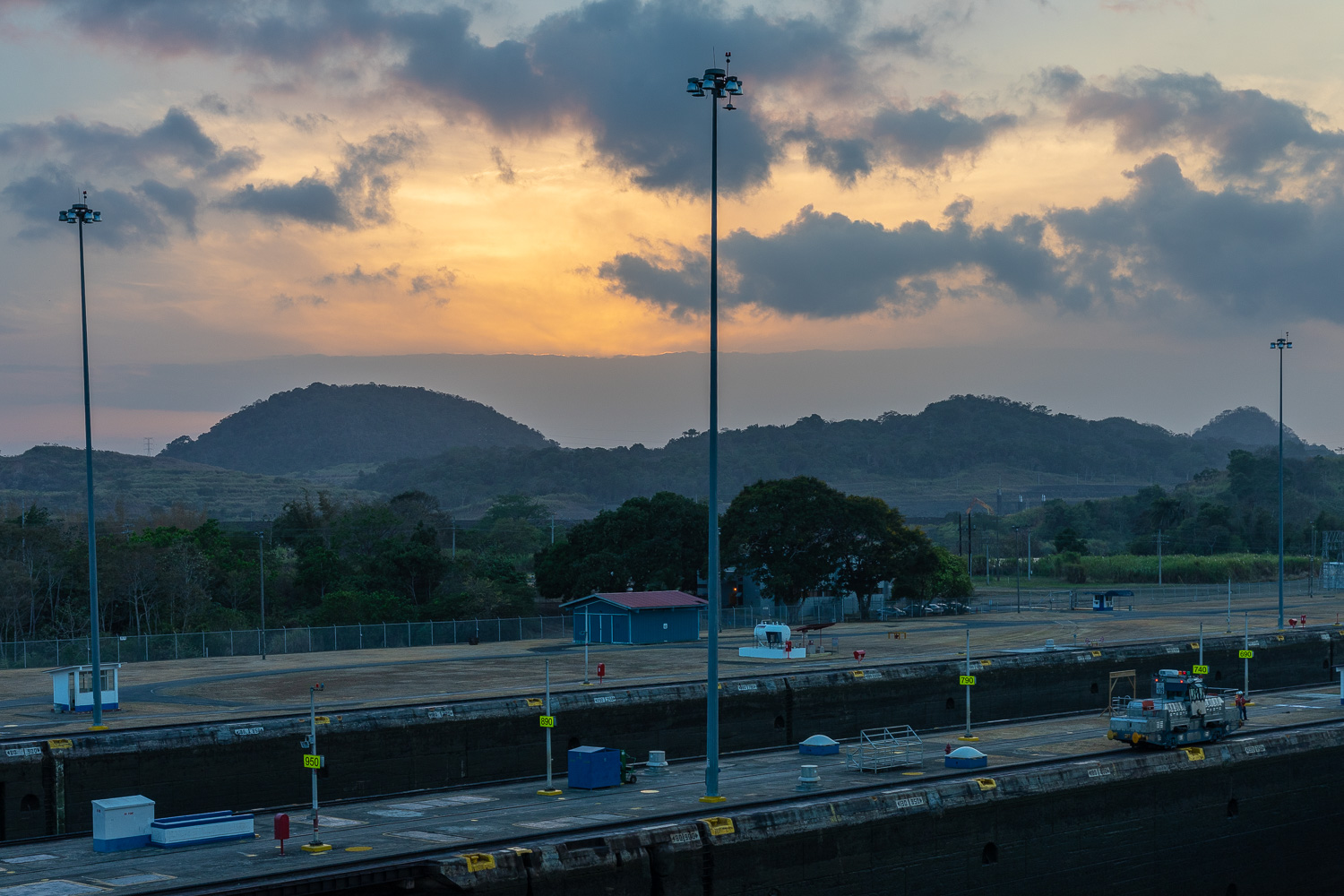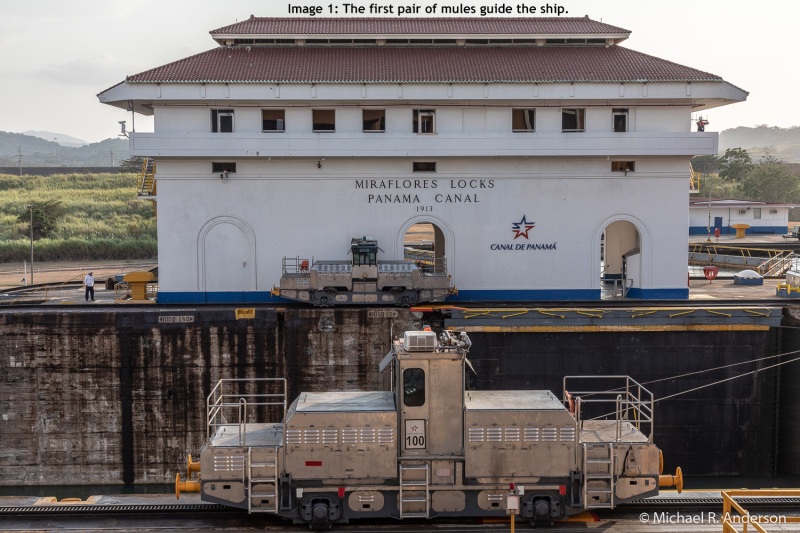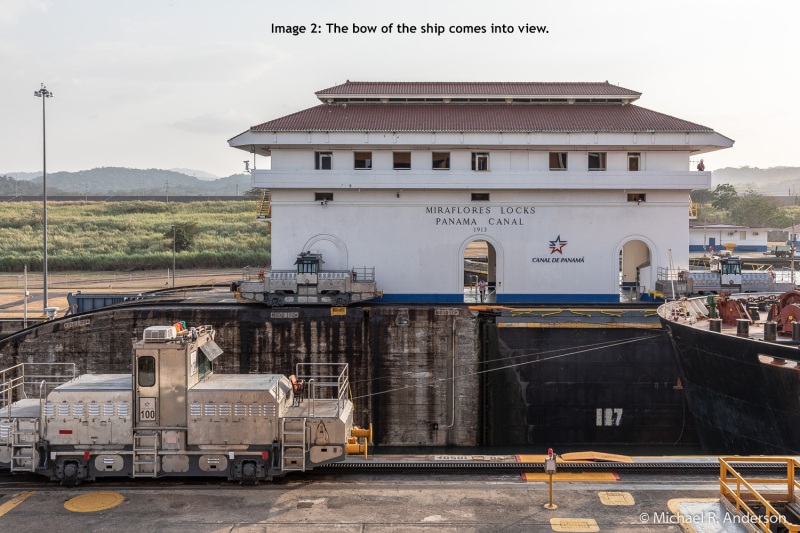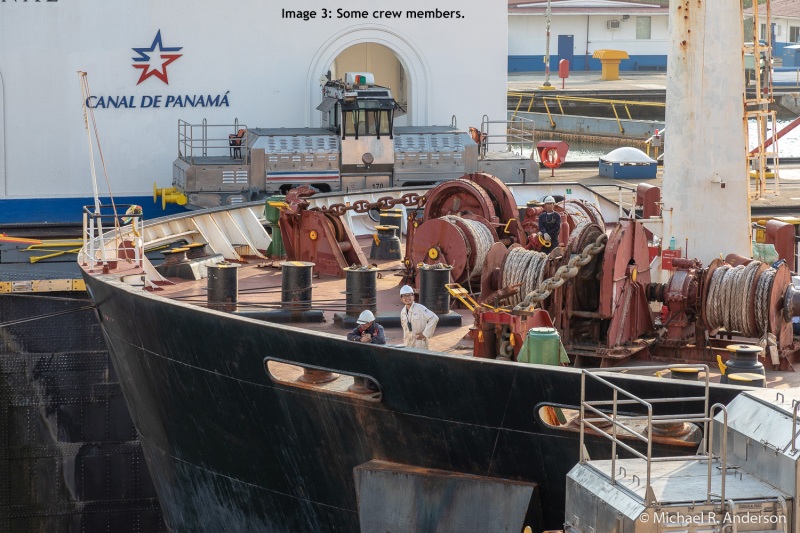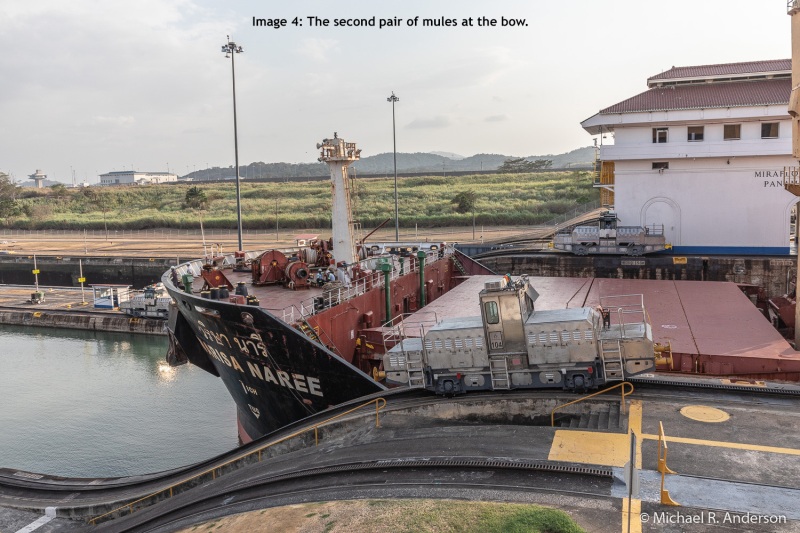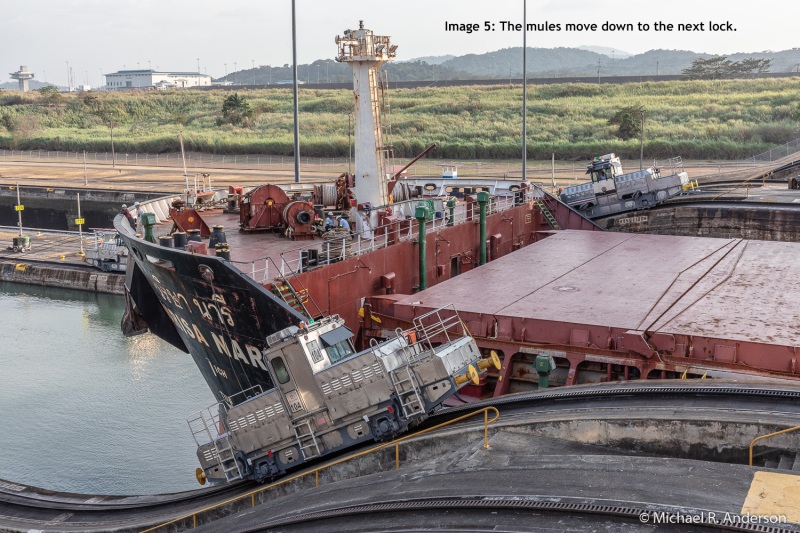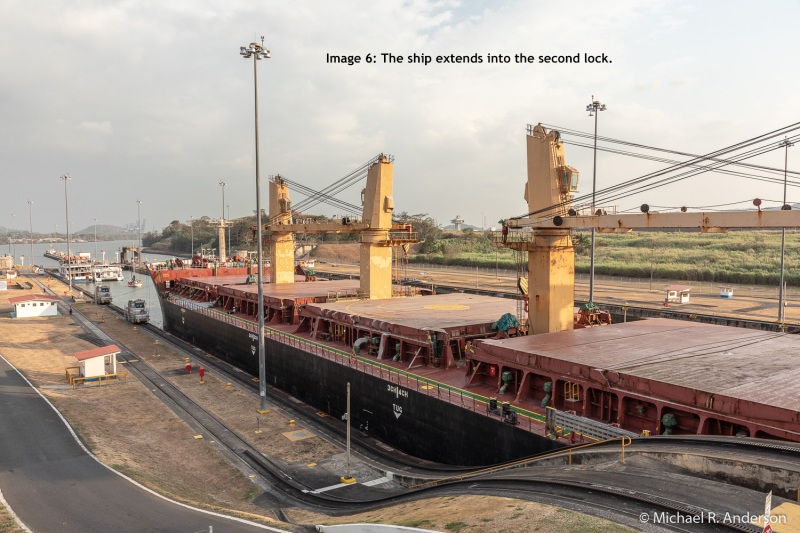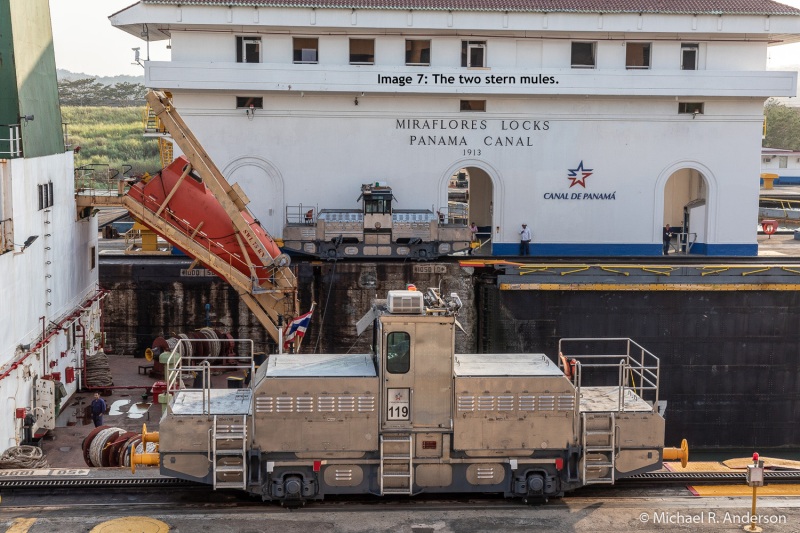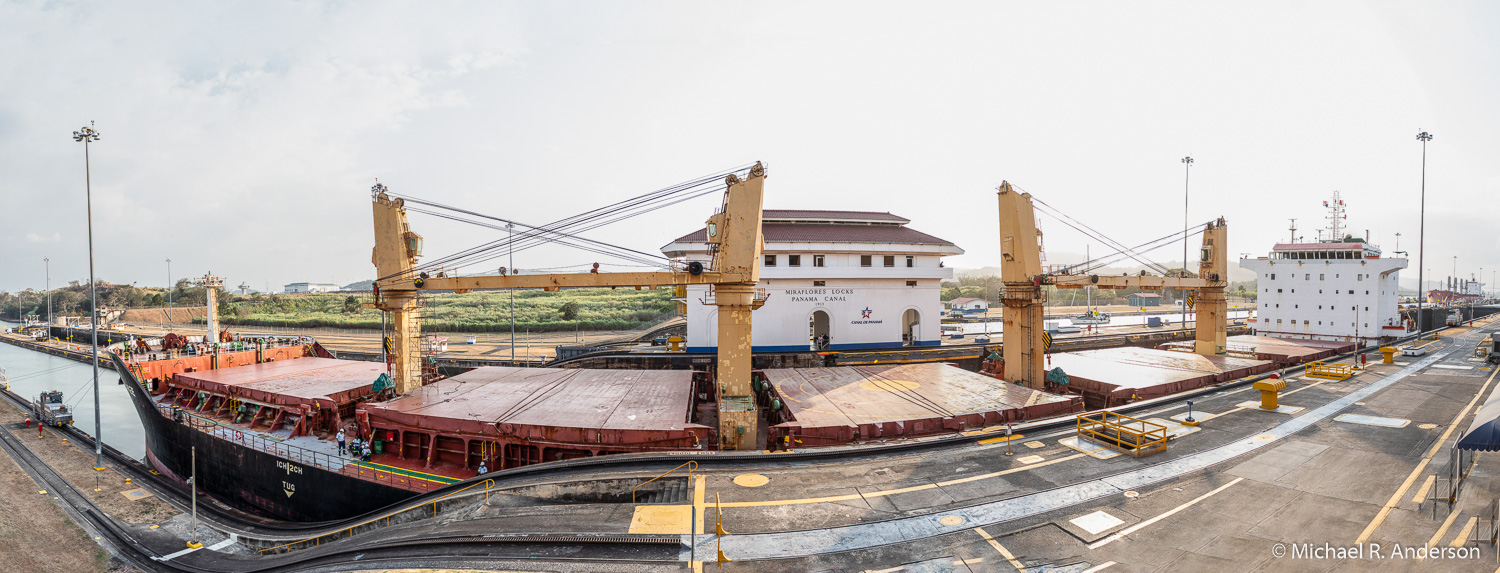
Dams and locks have been used for hundreds, maybe thousands, of years. The dams change a waterway into a series of steps with the necessary depth for the passage of vessels. The locks provide controlled passage through or around the dam and raise or lower the vessels from one step to the next. Even Madison has dams and locks, the largest one being where the Yahara River exits Lake Mendota. Spoiler alert: the dams and locks in the Panama Canal are bigger than the ones in Madison.
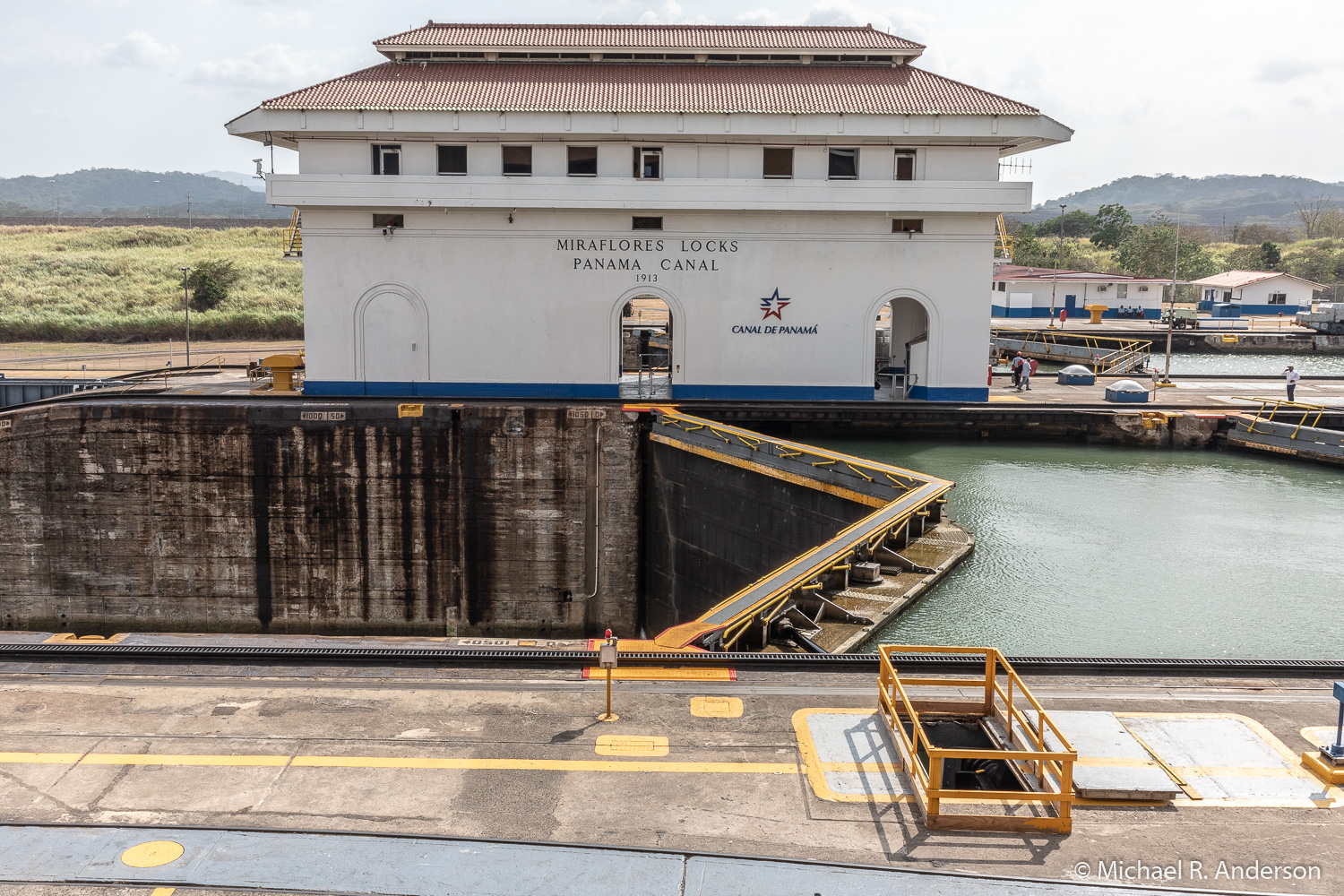
The afternoon before we traveled through the canal, we visited the Miraflores Locks to observe their operation. These are the two pairs of locks closest to the Pacific. A museum is also located there but I admit I was so fascinated with watching the ships in the locks that I never made it to the museum. Even though there are parallel sets of locks, ships don’t always travel in both directions at the same time. Ships traveling from the Pacific to the Atlantic and the Atlantic to the Pacific have their own schedules. The ships we were observing had nearly completed their transit of the canal and were about to be lowered down the final two steps before heading out to the Pacific. It’s interesting to note that ships going through the canal from the Atlantic to the Pacific don’t travel from east to west, they actually travel from northwest to southeast. You can save that piece of trivia for the next time you run out of things to say at a party.
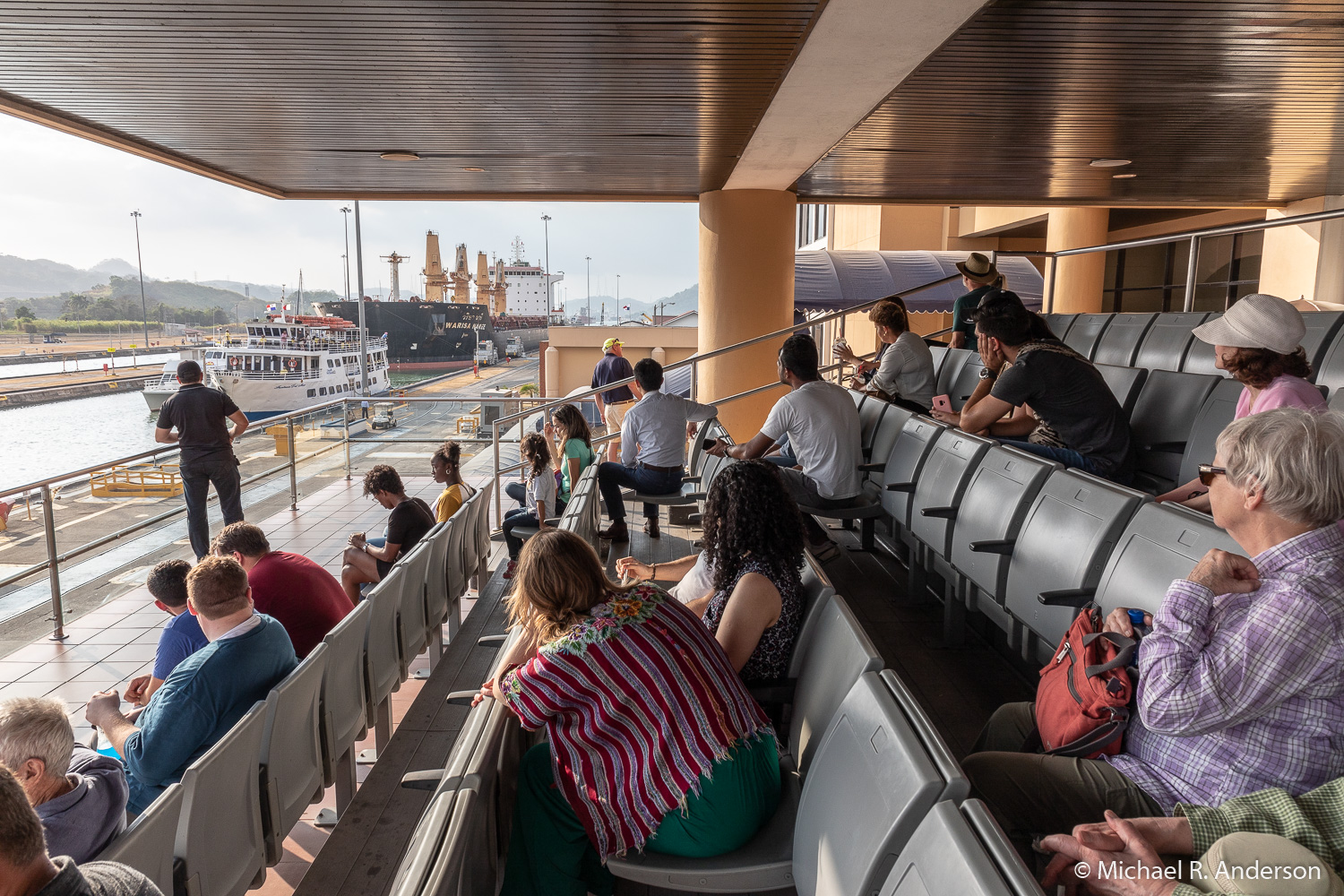
Watching ships passing through a canal is not exactly a sporting event, but there were seats from which to watch. They’re shaded to protect tourists from the typical 90+ degree F daytime high temperatures. A vendor situated behind the stands sold ice cream and cold drinks to sooth the hot and thirsty viewers.
The locks we observed are the original locks that opened in 1914. The chambers are 110 feet wide by 1000 feet long. They require 26,700,000 US gallons of water to raise vessels from one level to the next. Ships pass through three locks to reach the 85 foot elevation of Lake Gatun and pass through three additional locks when lowered back down to sea level at the other end of the canal. When there’s room, smaller vessels are placed into the locks along with a larger vessel. In the photos above and below you can see two tour boats and, if you look closely, the mast of a small sail boat. Moving in from behind to fill the lock is the Warisa Naree, a bulk carrier registered in Bangkok. In case you know as little about ships as I do, Google told me that bulk carriers haul unpackaged goods like grain, cement or coal. Note that the water level is near the top of the lock.
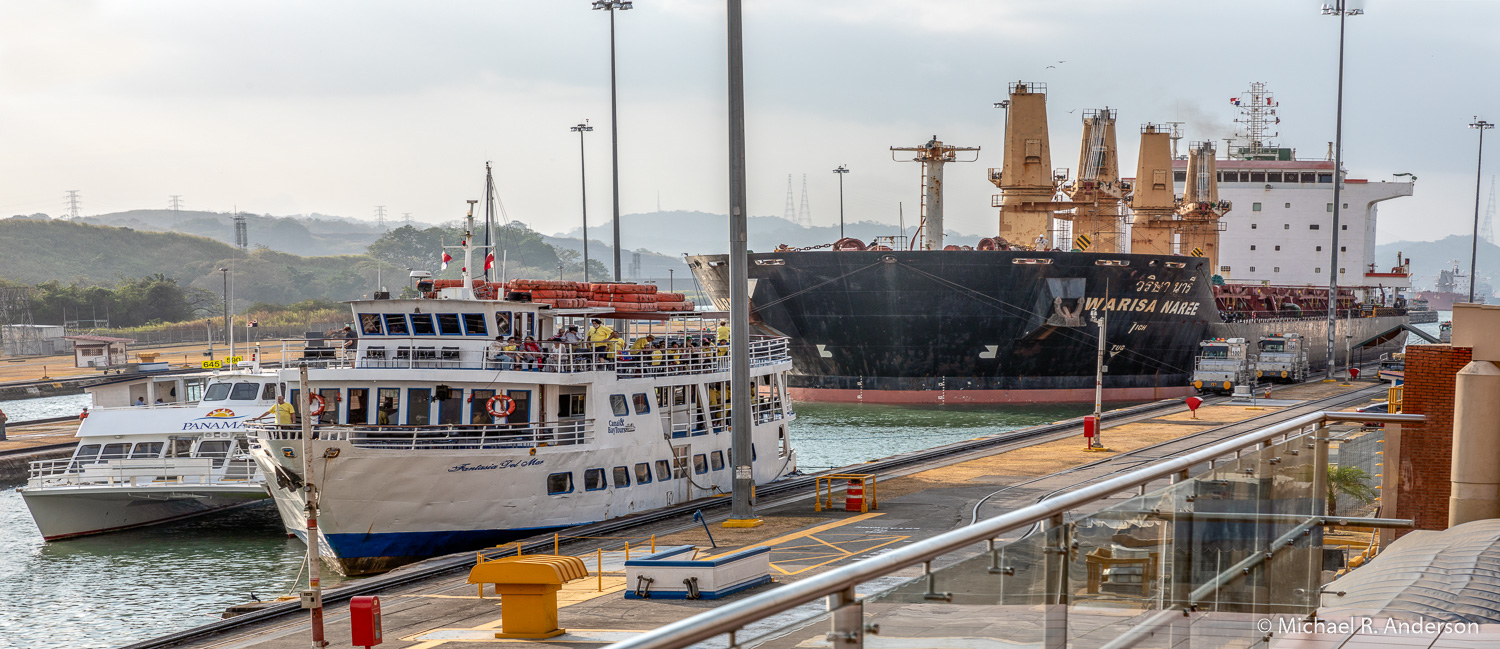
When the lock was drained, as shown below, the smaller vessels almost disappeared from sight and the deck of the bulk carrier was now level with the top of the lock wall.
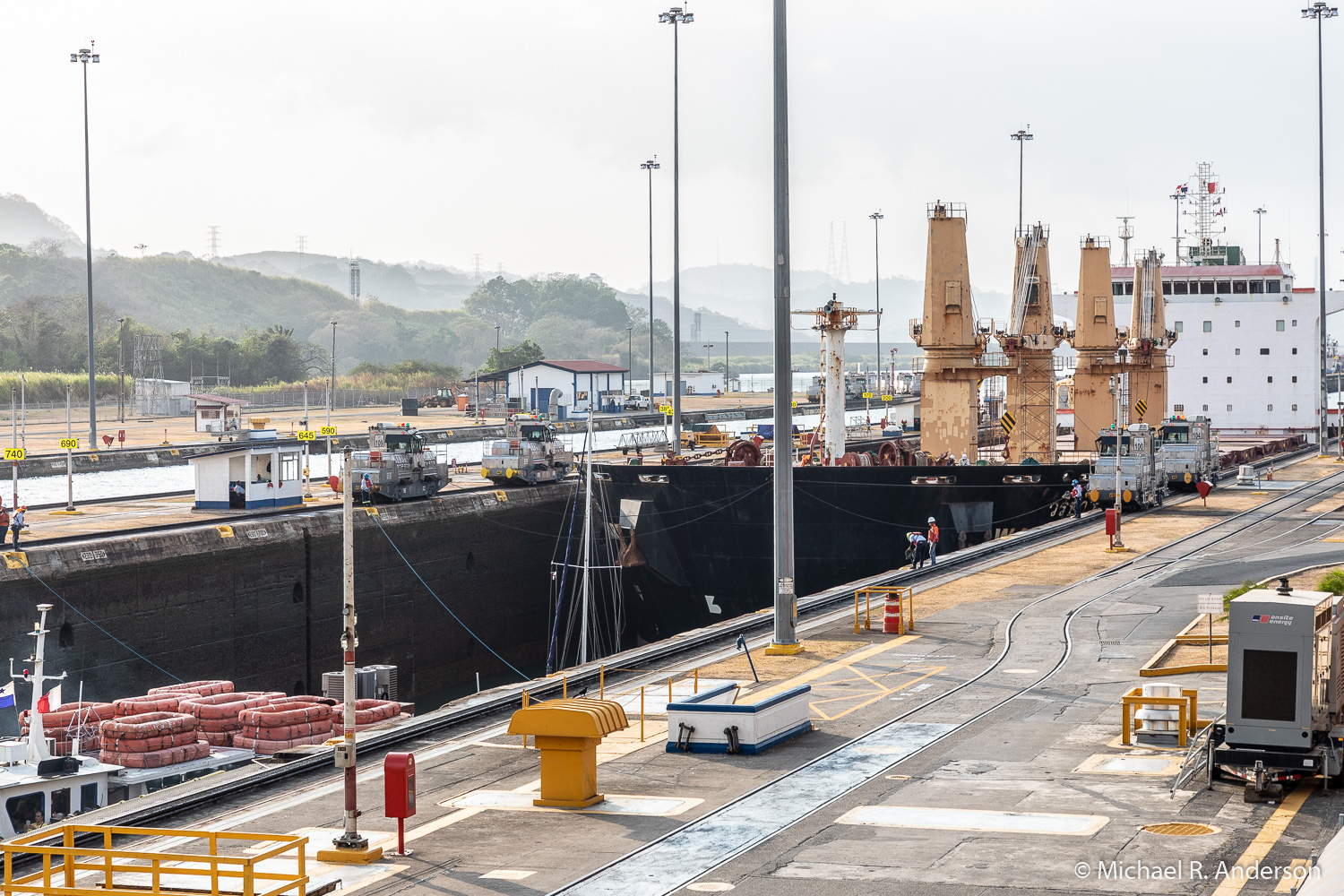
Ships travel through the locks under their own power, but large vessels are guided by “mules,” small locomotives that connect to each side of the ship at the bow and stern with steel cables. The purpose of the mules is to keep large ships centered in the lock. Ships like this have only two feet of clearance on each side so keeping them centered is a critical job.
The series of photos below (click on to enlarge) show mules guiding the Warissa Naree, a bulk carrier registered in Thailand from the first lock to the second. They travel on geared tracks down the incline from the elevation of the first lock to that of the second.
There was a lot of traffic on the canal. After the Warissa Naree moved out there were already three additional vessels making their way to the locks. They’re entering both sets of locks in the same direction. It’s not a race, however, since their fees must be paid and their passage times are scheduled several days in advance.
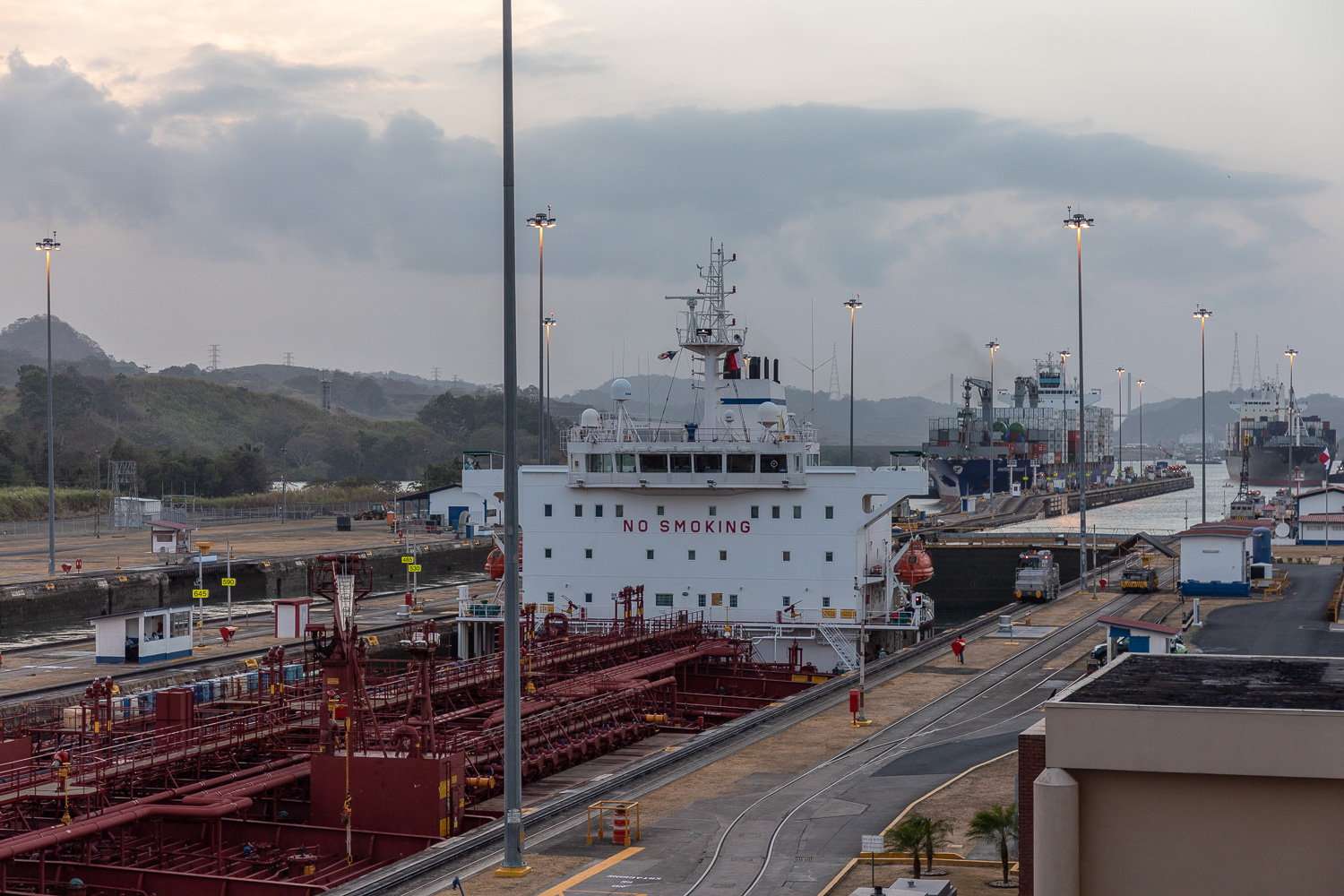
It was soon getting dark; when you’re at a latitude of about 9° N the sun sets pretty early. It set at 6:29 PM on March 20, 2019. On June 20, 2019 it will set at 6:39 PM. Only 10 minutes later from spring to summer. And the temperature will probably still reach a 90+ degree F daytime high.
